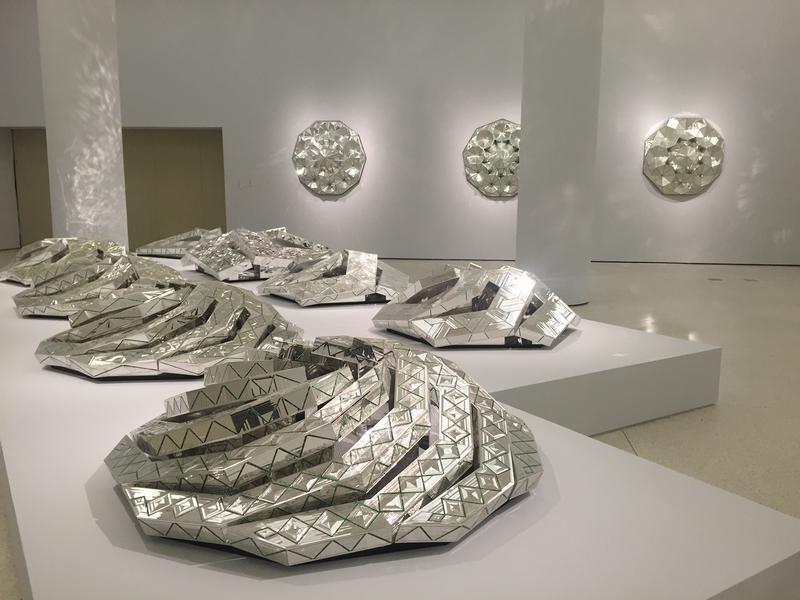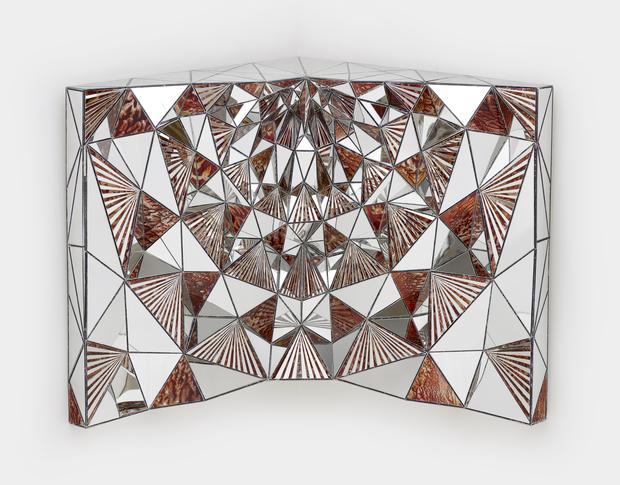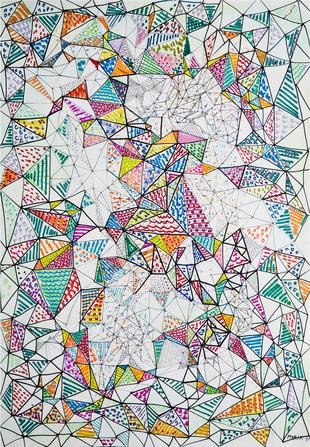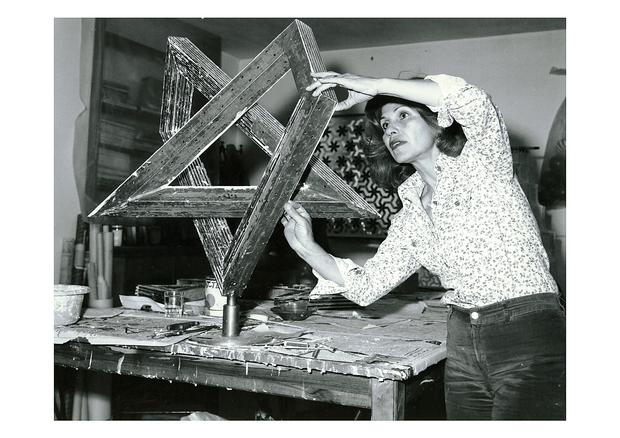
Iranian artist Monir Shahroudy Farmanfarmaian could have been a pop artist. Born in Qazvin, Iran, in 1924, she moved to the United States in 1945 to study at Cornell University and at Parsons School of Design. She worked as an illustrator for Vogue, and hung out with artists like Andy Warhol and Willem de Kooning.
But Farmanfarmaian returned to Iran in 1957 and decided to travel around her country. One day, she entered a mosque that was filled with mirrors, and she was taken by emotion. “I was crying like a baby. It was so beautiful, the reflection of the people,” she said. “So I decided, why shouldn't I bring these pieces, take them down from the wall and bring them to people’s houses.”
Farmanfarmaian’s works on mirrors and drawings are now on view at the Guggenheim Museum, her first retrospective. Her pieces are inspired by Persian architecture, the geometric forms in Islamic pattern, and Sufi cosmology.
The artist left Iran again after the Islamic Revolution in 1979 and lived in New York for 26 years. During this period she focused mostly on drawing and collage.
Most of the pieces in the show have not been seen before. "Nobody asked me," said Farmanfarmaian, laughing. Her work has been in several group exhibitions, including the Venice Biennale (1958, 1964, 1966, and 2009); The Museum of Modern Art, New York (1978–79) and the São Paulo Biennial (2010).
In 2004, Farmanfarmaian reestablished her studio in Iran, and started working again with some of the craftsmen she had collaborated with in the past.
"It's the only place I can work really, where I produce my mirror work," she said. "I cannot carry the craftsmen to come to live in America.”
The exhibit is on view until June 3rd.



